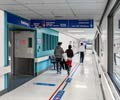Diagnosis
Diagnosis of MRSA is carried out culturing the bacteria isolated from suspected tissue samples. A genetic test is also available. A hospital patient may be tested for MRSA if –
- Signs of infection are seen
- There is previous history of infection
- The patient is transferred from a hospital with MRSA infection to a new hospital
The diagnosis of MRSA is usually done through simple means.
Culture –Once MRSA is suspected in a patient the following samples can be extracted from the patient and sent for culture to a microbiology lab –
- Blood sample
- Skin tissue
- Pus from the wound, if any
- Urine
- Other biopsy material
The tissue is allowed to grow on a petri-dish and the staph bacteria (S.aureus) is isolated. The bacteria is further allowed to grow in the presence of antibiotics, such as methicillin. Only the meth-resistant bacteria (MRSA) are able to thrive in the culture and the patient from whom the sample was taken is diagnosed to be MRSA-infected.
General Screening tests are not carried out with biopsied samples; instead swabs are taken from sites containing mucous membrane, such as nose, or from the skin.
Cultures take about 48 hours to grow and hence newer tests that take lesser time have been devised.
Genetic tests-The Food and Drug Administration (FDA) of the USA approved a genetic test, using a PCR (Polymerase Chain Reaction) which is done using a blood sample from the MRSA -suspected individual. Although the genetic material of the MRSA bacteria can be detected in a span of two hours the test is recommended only for diagnosis and not for monitoring or in deciding the course of treatment.











